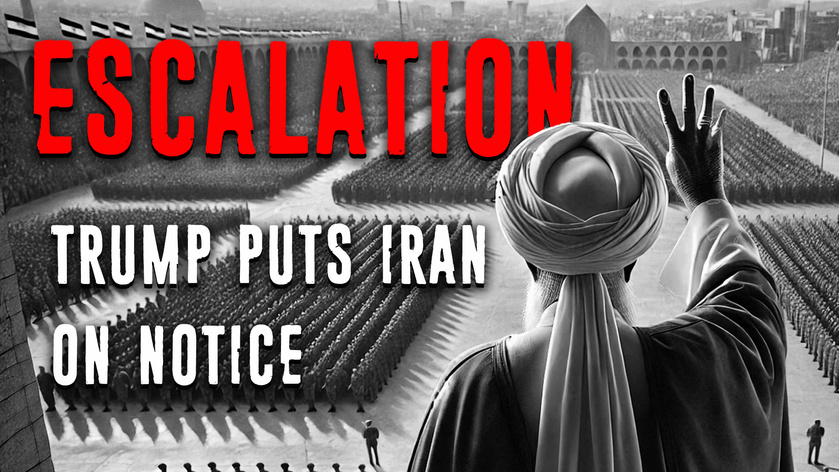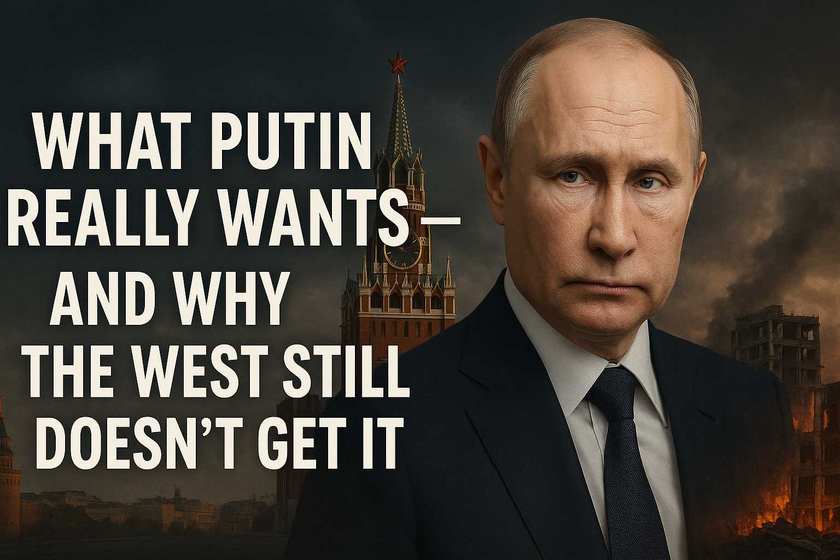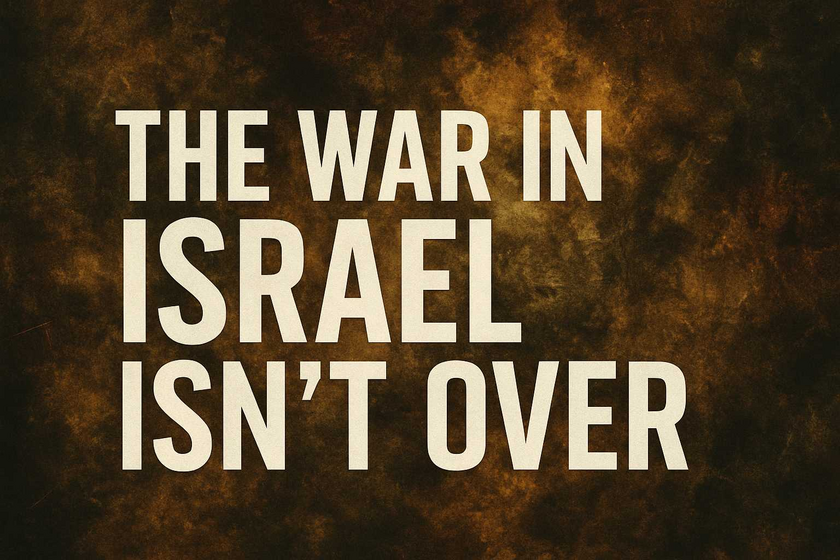


Netanyahu was once Israeli Finance Minister - and it shows. He understands a lot about economics, and is worth listening to in order to get a sense for where Israel's economy is headed.
BREAKING: The FBI and state of Utah have just released video of the Charlie Kirk kiIIer escaping from the scene following the shooting
He jumped off the rooftop, moved quickly through the parking lot, and then began walking casually to blend in before entering a wooded area.
He was wearing converse tennis shoes, a shirt with an eagle, and a baseball cap with a triangle.
Now’s the perfect time to go deeper with The Hot Zone.
Get full access to Chuck Holton’s uncensored frontline reporting for just $4/month when you join our Locals community. Use promo code GIVETHANKS25 at checkout and save $5 off your first year.
Plus, all merch is 20% off today only. Stock up while it lasts.
Join Locals: https://chuckholton.locals.com/support/promo/GIVETHANKS25
Shop Merch: https://livefireinc.myshopify.com/
Don't miss this chance to support real reporting and get exclusive content straight from the war zones.
I’ve had stem cell therapy through WholeLIFE’s Infinity Matrix, and it improved my eyesight. Since then, several members of my family have done the same. My son is planning to be scheduled for treatment soon to address chronic back issues.
WholeLIFE is a Christian non-profit that offers stem cell therapy at reasonable prices through clinics across the U.S. It’s a quick IV procedure that’s helping people recover from serious health problems.
If you’re even slightly curious, I recommend reaching out to Rebecca Tomlet. She’s a trusted family member and liaison for WholeLIFE and can answer your questions or get you scheduled for a free phone consultation.
Email: [email protected]
Here are some results from others who’ve gone through it:
Christina, 55, Oklahoma
"After losing 30 lbs of muscle and battling severe Lyme disease symptoms, stem cell therapy reactivated my muscles, restored my balance, cleared my brain fog, and at 5 months gave me my life back."
William, 84, Panama
...
Strongholds aren't like sand castles, they don't come down easily. For the enemy spends a lot of time fortifying lies in our thinking, so that they might withstand all barrages. Only by the power of God can they be destroyed completely, via the truth of His word, and submission to the Lord (2 Corinthians 10:4-5). So may our minds be filled with the knowledge of His will, in all spiritual wisdom and understanding (Colossians 1:9) - that we might see things clearly, and walk in the light with Him (1 John 1:7). Thinking according to the very mind of Christ Jesus, and nothing else (1 Corinthians 2:13-16).
O Lord, only through You is this possible! Please bring down any lies in our lives, and build us up in Your word, that we would love You, and our neighbors as we should. Ever fulfilling the Great Commandments, and the Great Commission, to the praise of Your glorious Name!
Amen and amen.

We’re all watching the same headlines, scrolling the same feeds, and trying to make sense of the same chaos. And yet, for all the information at our fingertips, there are still some very basic questions we aren't answering honestly — like what Vladimir Putin actually wants, why this war in Ukraine keeps grinding on, and what it really means for the United States and our allies.
If you missed the LIVE, you can watch it HERE
Do We Still Keep Our Promises?
Whenever I go live, I like to ask people where they’re watching from. It’s not just a gimmick; it tells me something important. There are folks in Poland, Germany, Israel, Armenia, and all over the United States who have skin in the game with what we’re about to talk about. They’re not watching this as an abstract discussion. For some of them, this is about whether the ground under their feet will still belong to their country five years from now.
So I asked a simple question: Should the United States keep the commitments it has already made to its allies?
I’m not talking about getting involved in every brushfire conflict on the planet. I’m talking specifically about the promises we have already put our name on — treaties we signed, obligations we accepted, and expectations we created that other nations have built their security around.
The biggest of those, of course, is NATO — the North Atlantic Treaty Organization — created after World War II for one core purpose: to keep a check on Russia. That wasn’t paranoia. That was historical memory. Russia, whether under the czars, the Soviets, or Putin, has an almost compulsive habit of invading its neighbors. In just the last few decades, they’ve gone into Georgia, Chechnya, Crimea, and now full-on into Ukraine. They’ve made no secret of the fact that they believe they have a right to dominate not only their immediate borderlands, but the wider European sphere as well.
The problem is that while Russia has been very clear about its ambitions, the West has not been nearly as clear about its resolve.
The War You Don’t See: Russia’s Cognitive Offensive
If you only look at maps and front-line reports, you might conclude that Russia is stumbling. Their advances are slow and costly, their equipment is getting older, and they’re losing a lot of men. But you miss half the story if you stop there, because the real battlefield — the one Putin is betting on — is not just in trenches and ruined towns. It’s in the minds of voters in the United States and Europe.
Russian intelligence and state-backed actors have poured millions of dollars into what’s now being called cognitive warfare. They’ve set up SIM farms, bot farms, and propaganda networks across multiple continents. These aren’t just a few trolls on a laptop. We’re talking about industrial-scale operations — huge racks of phones and servers churning out fake profiles by the hundreds of thousands, posing as Texans, Brits, Indians, Germans, and everything else you can imagine.
Their purpose is simple and very specific:
to quietly steer public opinion away from supporting Ukraine, to paint NATO as the real villain, and to soften the West’s will to resist Russian aggression. They don’t need most people to become full-on pro-Russian. They just need enough people to become skeptical, weary, and divided. They know that democracies often defeat themselves from the inside long before an enemy ever crosses the border.
Why Putin Keeps Showing Up to “Peace Talks” He Doesn’t Mean
You may have noticed something about every “peace process” floated over the last two years. Russia walks in, sits down at the table, plays the reasonable partner for a few days or weeks, and then undercuts the deal or simply ignores it.
There’s a reason for that.
Putin’s strategy is not to end the war quickly. His strategy is to drag it out as long as possible while shaping the political terrain in the West. As long as he can keep the guns firing, he believes he can:
Grind down Ukraine’s manpower and infrastructure
Burn through Western political patience
Deepen divisions between Europe and the United States
Wait for elections or leadership changes to give him a more favorable climate

From where I sit, the war in Israel is nowhere near over. It has simply changed shape. What started as a shock on October 7th has become a long, grinding contest across multiple fronts, and while the headlines may have grown tired, the stakes haven’t shrunk at all.
To understand what’s coming, you have to see the whole board, not just the one square called Gaza.
Five Fronts, One War
Israel is not dealing with a single isolated conflict. It is facing at least five interconnected fronts, each of them fragile and potentially explosive:
Gaza
Judea and Samaria (what the world insists on calling the West Bank)
Lebanon
Syria
Iran and its proxy network
They overlap, feed into one another, and are all being influenced—directly or indirectly—by Tehran. When people talk about a “ceasefire,” they’re usually talking about Gaza. But if you zoom out, you’ll notice there has never really been a ceasefire at all.
Gaza: A “Ceasefire” in Name Only
Let’s start with Gaza, because that’s where most cameras still point, at least when they bother to look.
On paper, there’s been a ceasefire. On the ground, Hamas has been shooting at Israeli troops almost every day. There have been firefights, mortars, IED attacks, and at least a few IDF soldiers killed since that so-called pause went into effect.
The Israelis have divided the Strip into zones: a red zone where Hamas still controls the ground, and a green zone under IDF control. You’d think the green zone would be relatively stable, but in reality Hamas fighters keep emerging from tunnel shafts inside those areas and ambushing Israeli patrols. More than forty of those fighters have been killed in these incidents alone.
So if you’re picturing neat front lines and a quiet truce, erase that image. Gaza is still a warzone, it’s just a slower, dirtier, more subterranean version of the earlier stages.
The map we’re looking at right now will probably define Gaza for the foreseeable future. Israel is unlikely to pull completely out of the green zone anytime soon. If it did, there are at least nine local militias in that territory—tribal groups that hate Hamas—who would instantly start fighting for control. You’d see a civil war inside a war.
On top of that, Hamas still holds weapons, still has command structures, and still has fighters who believe, very sincerely, that Israel has no right to exist. That’s why Israel’s second war aim—after bringing the hostages home—was to dismantle Hamas as a fighting force. They have not finished that job, and they know it.
The Hostages and the Narrative of “Israel is Losing”
A lot of pundits you see online—especially people like Douglas Macgregor, Scott Ritter, and some of the usual talking heads—keep repeating the line that “Israel has lost this war” and is collapsing from within.
That claim doesn’t hold up.
Israel has managed to secure the return of every single hostage except one. When this war began, I honestly didn’t think that was possible. The chaos in Gaza, the tunnel networks, the sheer brutality of Hamas made it seem almost inevitable that many captives would simply disappear—killed, buried, or used as human shields until the end.
Yet here we are: one hostage still unaccounted for, and even his remains may soon be recovered. That is an extraordinary outcome by any military or intelligence standard, and it is a victory no matter what the doom-mongers say.
At the same time, Israel has been quietly preparing for the next phase. Their defensive capabilities are actually stronger now than they were on October 6th. The Iron Beam laser defense system—something the United States and Russia both struggled to make operational—is finally being fielded. It’s not science fiction anymore; it’s an actual working layer in their air-defense umbrella. That’s going to matter a lot if this war expands into a full regional conflict.
So no, Israel is not crumbling. It is bruised, deeply divided internally in some ways, but militarily more ready than at any time since the fighting began.

If you’re watching from Venezuela, Trinidad, Colombia, or anywhere in the region, you don’t need me to tell you that the temperature is rising. Airspace restrictions, warships in the Caribbean, drug boats getting blown out of the water, and now more details about that phone call between President Trump and Nicolás Maduro—all of it points in one direction:
Let’s walk through what’s really happening, why it matters, and what it might mean for the people who are going to pay the highest price if this goes sideways.
The Trump–Maduro Phone Call: No Deals Left to Make
For several days we only knew that Trump and Maduro had spoken. Now we know a lot more about what was said.
According to Trump, the call was simple and blunt. Maduro wanted a deal: Let me stay in power, let me keep control of the military, and I’ll “help” you fight drugs. In other words: keep the cartel state intact, just rebrand it a bit.
Trump’s answer? No deal.
He essentially told Maduro, You’re out of bargaining chips. You’re not in a position to negotiate. You need to leave.
Whether that was phrased as a formal ultimatum or not, the message was clear: Washington is done pretending Maduro is a normal head of state. He’s a narco-dictator sitting on a collapsing country that has become a forward operating base for Russia, China, Iran, and every Marxist mischief-maker in the hemisphere.
That kind of phone call doesn’t happen unless other pieces are already on the board: intelligence operations, military deployments, diplomatic groundwork. And those pieces are very much in motion.
What Venezuela Looks Like From the Inside
To understand why things feel so volatile, you have to understand what daily life actually looks like inside Venezuela right now.
Hyperinflation has turned the national currency into colorful trash. The nominal minimum wage is about one U.S. dollar a month. Nobody lives on that, of course. People survive on side hustles, multiple family members crammed into one home, whatever odd jobs they can find, and—crucially—remittances from relatives abroad.
It costs roughly $500 a month to feed a family of four decently. The average Venezuelan scrapes together maybe a third to half of that. That gap is hunger. It’s kids fainting at school. It’s medicine you can’t afford and hospitals that demand you buy your own drugs before a nurse will even hang the IV bag.
I’ve been to the border city of Cúcuta, Colombia, many times. At night the streets are lined with Venezuelan women—some as young as 13 or 14—selling the only thing they still have left to sell. Many of them are mothers with husbands back home. They’re not there because they want to be. They’re there because socialism destroyed their economy, shredded the rule of law, and shoved them into a scarcity mindset where survival trumps morality.
That’s what twenty-five years of Chavista “revolution” does. It doesn’t just wreck GDP charts. It corrodes the culture from the inside out.
So when people say, “Hey, if things are so bad, why haven’t Venezuelans overthrown Maduro?”—the short answer is: he kept just enough money flowing to keep people barely alive and too exhausted, too beaten down, and too afraid to rise up.
Which brings us to the money.
Who’s Keeping Maduro Afloat?
At this point, two main lifelines keep the regime from collapsing outright:
Oil revenues, especially via Chevron, which pumps roughly 200,000+ barrels a day out of Venezuela under a special license. Under Trump’s terms, that money is supposed to be used mainly to pay down debt, not prop up the regime—but money is fungible. Any debt paid with Chevron cash is money Maduro doesn’t have to spend himself.
Remittances, mostly from Venezuelans abroad. We’re talking $4–5 billion a year flowing back into the country. That’s a huge chunk of what keeps ordinary families from starving—and indirectly keeps Maduro in place, because it prevents the kind of total collapse that would spark an uprising.
So you have a regime that can’t feed its people, can’t keep the lights on, and still finds billions for Cuban advisers, security forces, and friendly gangs—colectivos—who do the dirty work: intimidation, disappearances, torture, and political killings.
This is the system Trump is now openly threatening.
The Drug War at Sea—and the Double-Tap Controversy
Layered on top of the political drama is a shooting war at sea that most Americans are barely aware of.
U.S. forces have been blowing up narco-boats in the Caribbean and the Pacific—fast craft with four or five outboard motors or semi-submersibles that exist for exactly one purpose: smuggling drugs. These vessels aren’t 10 miles off a beach; they’re 80–90 miles offshore, running dark, and moving way too fast for anyone to pretend they’re fishing boats.
The Pentagon says they know who’s on these boats, where they left from, where they’re headed, and what they’re carrying. The cartels involved have been designated foreign terrorist organizations. So the U.S. has declared this an armed conflict with those groups.
That’s why they’re using missiles instead of Coast Guard boarding parties.
The problem is the last strike, where a Washington Post story—based on anonymous sources—claims Secretary of War Pete Hegseth ordered a second hit on a wrecked boat where two survivors were clinging to the debris. If that’s true, and those men were no longer a threat, then under the laws of armed conflict that would cross the line into an unlawful killing.
Hegseth flatly denies giving that order. Congress has launched investigations. Until the classified intel comes out, anyone claiming to know exactly what happened is guessing.
Here’s the key point: finding out what happened, and prosecuting it if necessary, is exactly what differentiates a flawed but functioning republic from a regime like Maduro’s, where crimes by the state are covered up, not corrected.
Which brings us to the speeches.













